Capstone Projects and Internships
A Capstone Project provides an opportunity for students explore a topic in detail, usually involving independent analysis of information collected by others to address a problem of consequence in your field. An internship is a valuable way for students to obtain real world experience with organizations such as companies, governmental organizations, non-governmental organizations (NGOs), or educational facilities. Most students conduct their Capstone Projects or Internships during the summer, though students make also take these courses during fall or spring semesters.
Below are a few examples of student projects and internships:
Christopher Eagler (MA, 2023)
For his internship, Christopher had worked with the New York State Department of Environmental Conservation to analyze existing data on piping plover productivity on beaches in New York State. As the piping plover is an endangered and federally protected shorebird, it is important to manage their populations accordingly to improve their breeding success. There has been a growth in plover populations over past years, especially with 2022 being the year of the most piping plover pairs on Long Island. Productivity rates need to increase, develop a HCP, foster public engagement and support for plover conservation. His analysis yielded results to inform conservation efforts for the DEC. Christopher’s conservation recommendations include working to increase plover productivity rates, and developing a Habitat Conservation Plan in the future. Finally, he suggests promoting public support and engagement for plover and other shorebird conservation efforts.
Hayley Frier (MA, 2023)
Hayley interned with IAATO, the International Association of Antarctic Tour Operations, for her graduate project. Her project title was the Comparison of Antarctic Cetaceans and Pinniped Sightings From Tourism Vessels and Scientific Literature. The information that she had gathered was used to advise vessels of mammals in Antarctic waters to protect these species from vessel strikes. Her project also focused on acknowledging the influx in tourism to the Antarctic continent, and how to advise IAATO to promote safe wildlife practices by accounting for increased marine traffic and tourism. Hayley was able to create maps that showed pinniped and cetacean sightings across the 2023 season. Some of her objectives were to provide IAATO members with weekly updates about mammal sightings, by using GIS to map the sightings in comparison to past literature. Hayley also made recommendations for the program to better understand mammal sightings in Antarctica, and safely manage these moving forward.
Anna Meichenbaum (MA, 2023).
During her capstone with Cornell Cooperative Extension, Anna conducted a seahorse study for the presence of hippocampus erectus in Shinnecock Bay. Through citizen science, Anna worked with the community to look at the abundance of seahorses in the bay. Particularly since seahorses are listed as Vulnerable on the IUCN Red List, Anna wanted to compare the prevalence of seahorses throughout Shinnecock Bay, especially in conjunction with the Shinnecock Bay Restoration Program. Anna monitored seahorses in a variety of ways, including scuba diving, seining, or citizen monitoring and public events. The study was particularly helpful to show the health of eelgrass meadows in Shinnecock Bay, and how they might act as an indicator of ecosystem health.
Abigail Costigan (MA, 2022)
Abigail’s internship with the Peconic Estuary Partnership further investigated horseshoe crab habitat selection and spawning distribution on Long Island. Her project involved finding suitable sites to conduct distribution surveys, and finding the correct protocol for spawning horseshoe crab surveys. Her study indicated habitat suitability index should be required, and there should be further research into the harvesting rules for horseshoe crabs, especially where there are hard and shorelines and bulkheads. Horseshoe crab abundance is important to understand for future conservation efforts.
Nicole Dergosits (MA, 2021)
Nicole’s project with the Surfrider Foundation looked at ways to increase public engagement in combating plastic pollution, especially through social media. With discarded plastics being a catastrophic issue in our oceans Nicole analyzed COVID-19 impacts of plastic pollution in our oceans, especially from PPE. Her project also looked at specific areas; Indonesia was one case study with the management of their plastic pollution. Through different forms of media, like film series and a plastic pollution campaign, Nicole’s goal was to encourage individuals to have discussions about living more sustainably and promoting sustainability in the future, to spread awareness about plastics and recycling.
Ellie Evans (MA, 2021)
Ellie worked to develop a prototype Long Island Beach and Water Quality application during her time and the Marine Conservation and Policy program. Water quality testing was often done by many different organizations, and Ellie took the time to compile all this information and display it for the public in a convenient location. By creating this app, her goal was to notify the public of any changes to water quality for recreation activities, fishermen, and other beachgoers. Her three main sources of data were from the Gobler Lab for the water quality index data, the New York State Department of Health for beach closures, and shellfish closures from the New York State Department of Environmental Conservation. Through the use of coding and ArcGIS, Ellie was able to display the data to be user-friendly and accessible. Ellie‘s future goals include aiming to expand the dataset to include harmful algal blooms and other oceanographic and marine information that might be relevant to beach covers across the island.
Michael Bowen (MA, 2022)
Michael’s internship project analyzed recreational fisheries’s data in New York State. Recreational fisheries are not as studied as intensely as commercial fisheries, but recreational fishery interest is growing in the United States. This fishery data is important to get a comprehensive overview of existing fish stocks through recreational fishing accounts.
Michael was an Access Point Angler Intercept Survey person through the Marine Recreational Information Program, and did a field interview position with the New York State Department of Environmental Conservation (NYSDEC) to assess the effort and catch a recreational fisherman across Long Island. His main goals were to determine the trends and compliance for two species in particular, striped bass and summer flounder, to determine the quality of the data that is provided to the NYSDEC. Ultimately, the goal of his project was to improve compliance and encourage reporting on time and accurately through Vessel Trip Reports (VTR).
Melanie Shaw Smith (MA, 2022)
Melanie’s graduate internship studied the efficacy of using social media as a platform to discuss impacts of storm surge in urban and natural areas. Melanie’s project demonstrated how important it is to advocate for the climate crisis information and communicate climate science to the general public. Through weekly Instagram tools like stories and posts and hashtags, she wanted to reach out to audiences by boosting engagement for Metro Surge, which is the Storm Surge Work Group for New York and New Jersey. Following trends on social media, she also used Google Sites to develop a brand and spread the word about coastal resiliency. Melanie discovered that social media is an effective way to reach audiences, and content that merges social media and scientific research is most likely to be shared.
Siobhan Keeling, (MA, 2021)
Siobhan’s project focused on humpback whale entanglement in the New York Bight. Through her work in the Thorne Lab, she analyzed data within the West Indies population. Entanglement is a serious cause of humpback whale mortality, and so part of her objective was to identify scarring on these marine mammals to indicate whether or not it was from an anthropogenic source. By using drone footage and aerial detection, Siobhan’s project allowed her to make recommendations for ropes in fishing and better fishery practices to protect the conservation of these species in the long-term.
Jonathon Gaare (MA, 2020)
Jonathon Gaare interned as a seasonal Park Ranger Interpreter for the National Park
Service at the nearby Fire Island N ational Seashore and focused his project on science communication during a pandemic.
The role of the Interpreter is to use their diverse wealth of knowledge of the park
to engage and inspire visitors to learn about and enjoy its beautiful spaces. Jonathon
found that due to the pandemic, traditional methods of science communication and interaction
needed to be modified to maintain safety for all involved while still effectively
sharing information and fostering visitor interest and investment in the local environment.
Traditional communication tools, such as visitor centers could not be opened to the
public, so fixed-point interpretation at doorways and frequent roving of the field
were used to maintain good communication and capitalize on educational opportunities
with visitors. Jonathon helped develop the “Watch Hill Expedition,” a combination
of a self-guided tour and a scavenger hunt, which visitors could take part in rather
than the traditional guided tours that would normally have been given. Jonathon spent
much of the summer stationed at the Sailors Haven Visitors Center which is adjacent
to the Sunken Forest. Using concepts learned in the MCP program he was able to provide
a frontline opportunity for visitors to observe and recognize the true effects of
sea level rise on this globally rare maritime holly forest.
ational Seashore and focused his project on science communication during a pandemic.
The role of the Interpreter is to use their diverse wealth of knowledge of the park
to engage and inspire visitors to learn about and enjoy its beautiful spaces. Jonathon
found that due to the pandemic, traditional methods of science communication and interaction
needed to be modified to maintain safety for all involved while still effectively
sharing information and fostering visitor interest and investment in the local environment.
Traditional communication tools, such as visitor centers could not be opened to the
public, so fixed-point interpretation at doorways and frequent roving of the field
were used to maintain good communication and capitalize on educational opportunities
with visitors. Jonathon helped develop the “Watch Hill Expedition,” a combination
of a self-guided tour and a scavenger hunt, which visitors could take part in rather
than the traditional guided tours that would normally have been given. Jonathon spent
much of the summer stationed at the Sailors Haven Visitors Center which is adjacent
to the Sunken Forest. Using concepts learned in the MCP program he was able to provide
a frontline opportunity for visitors to observe and recognize the true effects of
sea level rise on this globally rare maritime holly forest.
Christine Suter (MA, 2020)
Christine Suter conducted her internship with the Atlantic Marine Conservation Society
(AMSEAS) based in Hampton Bays, New York, where she analyzed data on sea turtle strandings
in the coastal waters of New York for the years 2010, 2012 and 2016. Her goals were
to establish a procedure for analyzing the data, provide a baseline from which data
in prior and subsequent years could be compared, and to identify trends relating to
debris ingestion and entanglement within and between the three years observed. Most
of the debris-related strandings she reviewed involved loggerhead turtles that had
ingested soft plastic debris and latex balloon fragments, while most of the entanglement-related
strandings involved leatherback turtles that had become entangled in lines from pot
fisheries. In addition to analyzing the strandings data, Christine attended a series
of necropsy training sessions with AMSEAS and assisted with several marine mammal
and sea turtle necropsies throughout the summer.
establish a procedure for analyzing the data, provide a baseline from which data
in prior and subsequent years could be compared, and to identify trends relating to
debris ingestion and entanglement within and between the three years observed. Most
of the debris-related strandings she reviewed involved loggerhead turtles that had
ingested soft plastic debris and latex balloon fragments, while most of the entanglement-related
strandings involved leatherback turtles that had become entangled in lines from pot
fisheries. In addition to analyzing the strandings data, Christine attended a series
of necropsy training sessions with AMSEAS and assisted with several marine mammal
and sea turtle necropsies throughout the summer.
Kayla Clauson (MA, 2020)
Kayla Clauson interned as an educator and research assistant with Narragansett Bay
National Estuarine Research Reserve (NBNERR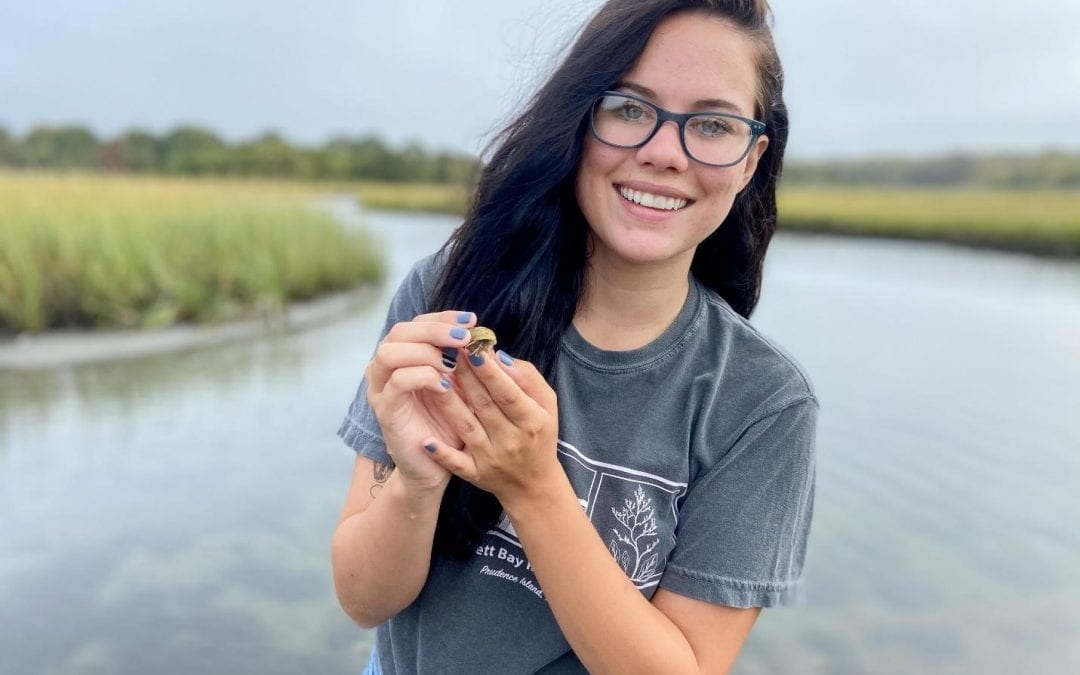 ) through the Rhode Island Department of Environmental Management on Prudence Island.
Prudence Island is a remote island in the geographical center of Narragansett Bay
that has a wide range of habitats which she explored and taught about. Kayla focused
on science communication and translation; making science meaningful for a variety
of audiences including homeschool groups, family programs, and virtual programming. As part of her individual research project she was the first person to monitor spawning
American horseshoe crabs (Limulus polyphemus) on Prudence Island. The population was monitored across a latitudinal gradient during
spring high tides occurring in June and July. Additionally, Kayla quantified the associated
parasitic interactions between horseshoe crabs and their obligate triclad parasite,
Bdelloura candida. Parasitic interactions are often overlooked in ecological monitoring, and Kayla
used this opportunity to increase the scientific knowledge of interactions between
the horseshoe crab, a target conservation species, and the parasite Bdelloura candida.
) through the Rhode Island Department of Environmental Management on Prudence Island.
Prudence Island is a remote island in the geographical center of Narragansett Bay
that has a wide range of habitats which she explored and taught about. Kayla focused
on science communication and translation; making science meaningful for a variety
of audiences including homeschool groups, family programs, and virtual programming. As part of her individual research project she was the first person to monitor spawning
American horseshoe crabs (Limulus polyphemus) on Prudence Island. The population was monitored across a latitudinal gradient during
spring high tides occurring in June and July. Additionally, Kayla quantified the associated
parasitic interactions between horseshoe crabs and their obligate triclad parasite,
Bdelloura candida. Parasitic interactions are often overlooked in ecological monitoring, and Kayla
used this opportunity to increase the scientific knowledge of interactions between
the horseshoe crab, a target conservation species, and the parasite Bdelloura candida.
Nolan Slattery (MA, 2020)
Nolan’s capstone study, a New York State Marine Aquaculture 2020 Prospectus, included a comprehensive review of both the history of 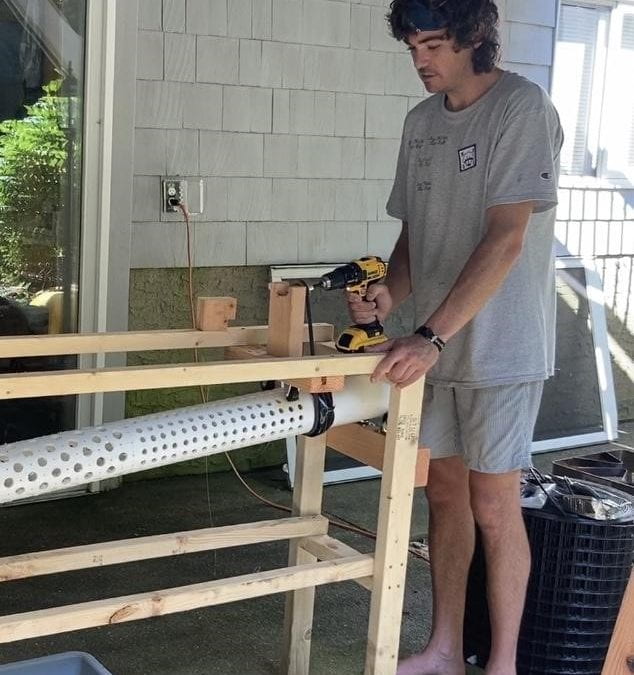 shellfish and aquaculture in New York and recent policy events that have direct implications
on commercial aquaculture in New York. In the Summer of 2020, two major policy events
were underway: an executive order was issued with the intent of accelerating domestic
offshore aquaculture and the development of a 10-year review of Suffolk County’s Shellfish
Aquaculture Lease Program. Additionally, Nolan participated in the County’s lease
program, operating as a restorative shellfish farm in 2020. He was able to use the
insights he gained from first-hand experiences with environmental regulators, legislators,
and local shellfish hatcheries in conjunction with his analysis of the current policy
decisions taking place locally and nationally in the development of this prospectus.
Automation, sustainability, and globalization were important factors considered while
developing the prospectus. For more information about the shellfish farm Nolan founded,
click here.
shellfish and aquaculture in New York and recent policy events that have direct implications
on commercial aquaculture in New York. In the Summer of 2020, two major policy events
were underway: an executive order was issued with the intent of accelerating domestic
offshore aquaculture and the development of a 10-year review of Suffolk County’s Shellfish
Aquaculture Lease Program. Additionally, Nolan participated in the County’s lease
program, operating as a restorative shellfish farm in 2020. He was able to use the
insights he gained from first-hand experiences with environmental regulators, legislators,
and local shellfish hatcheries in conjunction with his analysis of the current policy
decisions taking place locally and nationally in the development of this prospectus.
Automation, sustainability, and globalization were important factors considered while
developing the prospectus. For more information about the shellfish farm Nolan founded,
click here.
Carolyn Sukowski (MA, 2014)
For her Capstone Project, Carolyn conducted shoreline surveys in the New York Marine
District to examine the ingress, egress, and abundance of migratory shorebirds, including
the proposed (September 2013) federally threatened red knot (Calidris canutus rufa).
 She also contrasted sediment cores from migratory shorebird foraging and non-foraging
areas in order to determine preferred prey items for these species and to assess how
available prey items determine distribution for these long-distant migrants. Carolyn
worked directly with Cornell Cooperative Extension of Suffolk County’s Marine Program
and the New York State Department of Environmental Conservation (NYSDEC) who spearheaded
this project. Through these efforts, environmental conservation managers will gain
a better understanding of shorebird migration patterns, critical habitat for these
species, and the importance of horseshoe crab eggs in migratory shorebird diet which
could potentially lead to the concurrent management of these species in the future.
She also contrasted sediment cores from migratory shorebird foraging and non-foraging
areas in order to determine preferred prey items for these species and to assess how
available prey items determine distribution for these long-distant migrants. Carolyn
worked directly with Cornell Cooperative Extension of Suffolk County’s Marine Program
and the New York State Department of Environmental Conservation (NYSDEC) who spearheaded
this project. Through these efforts, environmental conservation managers will gain
a better understanding of shorebird migration patterns, critical habitat for these
species, and the importance of horseshoe crab eggs in migratory shorebird diet which
could potentially lead to the concurrent management of these species in the future.
Sara Hugentobler (MA, 2014)
Sara Hugentobler’s Capstone Project focused on the migration of Pacific Bluefin Tuna,
a commercially important and heavily exploited  species. To complete this project, Sara collected samples in Taiwan for stable isotope
analysis. Pacific Bluefin Tuna make transoceanic migrations and from the data collected,
age and diet differences should be able to elucidate migration patterns. This work
will fold into a larger research study conducted by Stony Brook University post-doc
Dr. Daniel Madigan. In order to complete this project, Sara received funding from
the National Science Foundation’s East Asia and Pacific Summer Institutes.
species. To complete this project, Sara collected samples in Taiwan for stable isotope
analysis. Pacific Bluefin Tuna make transoceanic migrations and from the data collected,
age and diet differences should be able to elucidate migration patterns. This work
will fold into a larger research study conducted by Stony Brook University post-doc
Dr. Daniel Madigan. In order to complete this project, Sara received funding from
the National Science Foundation’s East Asia and Pacific Summer Institutes.
Nico Hernandez (MA, 2014)
The salt domes that create the Flower Garden Banks NMS support spectacular coral communities
that are renowned throughout the world. Recent research revealed several vulnerable banks outside the current sanctuary
boundaries leading the Sanctuary Advisory Counsel to propose boundary expansions and
the creation of a research only area. Nico created socioeconomic profiles to help
managers mitigate impacts to the three users, commercial fishermen, charter fishermen
and dive boat operators. Demographic, cost and earning, knowledge attitude and perception
as well as spatial activity (landings, person days, effort) were analyzed to reveal
areas of economic importance. The profiles will be used in a spatial decision support
tool that will allow the users to create their own boundary expansion alternatives
and view the potential impacts. It will also be used in a post-implementation study
to observe the actual socioeconomic impact is to users. Nico also helped created survey
materials for a valuation study of Puerto Rico’s coral reefs, wrote technical document
summaries and attended many meetings.
world. Recent research revealed several vulnerable banks outside the current sanctuary
boundaries leading the Sanctuary Advisory Counsel to propose boundary expansions and
the creation of a research only area. Nico created socioeconomic profiles to help
managers mitigate impacts to the three users, commercial fishermen, charter fishermen
and dive boat operators. Demographic, cost and earning, knowledge attitude and perception
as well as spatial activity (landings, person days, effort) were analyzed to reveal
areas of economic importance. The profiles will be used in a spatial decision support
tool that will allow the users to create their own boundary expansion alternatives
and view the potential impacts. It will also be used in a post-implementation study
to observe the actual socioeconomic impact is to users. Nico also helped created survey
materials for a valuation study of Puerto Rico’s coral reefs, wrote technical document
summaries and attended many meetings.
Amanda Eplett (MA, 2014)
According to the Endangered Species Act, a review must be conducted on protected species
every 5 years to determine if the species should be uplisted, down-listed, delisted,
or if the current listing should remain the same. During her internship with the National
 Marine Fisheries Service Office of Protected Resources, Endangered Species Conservation
Division, Amanda Eplett developed the first draft of the sperm whale 5-year review
focusing on the recovery criteria provided in 2010 Recovery Plan. She reviewed literature
from 2008-2014 from a variety of sources, such as journal articles, technical documents,
and yearly stock assessment reports. The information was organized and summarized
into the first draft of the 2014 sperm whale 5-year review. After the review was drafted,
the information was analyzed based on the recovery criteria to determine if any change
in listing was warranted. In addition to the 5-year review, Amanda also attended meetings,
assisted with editing technical documents, and began development of a review paper.
Marine Fisheries Service Office of Protected Resources, Endangered Species Conservation
Division, Amanda Eplett developed the first draft of the sperm whale 5-year review
focusing on the recovery criteria provided in 2010 Recovery Plan. She reviewed literature
from 2008-2014 from a variety of sources, such as journal articles, technical documents,
and yearly stock assessment reports. The information was organized and summarized
into the first draft of the 2014 sperm whale 5-year review. After the review was drafted,
the information was analyzed based on the recovery criteria to determine if any change
in listing was warranted. In addition to the 5-year review, Amanda also attended meetings,
assisted with editing technical documents, and began development of a review paper.
Sarah Bailey (MA, 2014)
Sarah Bailey conducted her internship at the National Marine Fisheries Service (NMFS)
office in Narragansett, RI working as a statistical fisheries intern for Dr. Jon Hare.
During this time Sarah analyzed the movement of a commercially viable fin-fish species,
the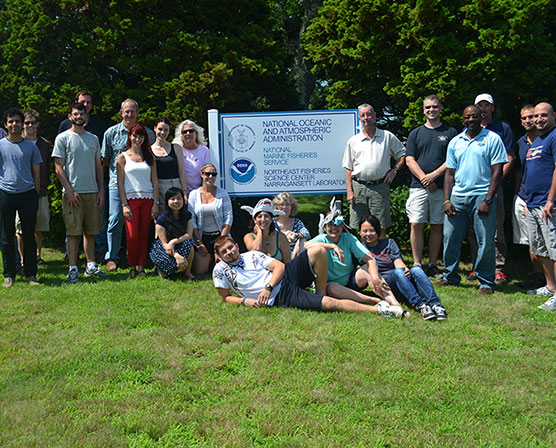 Atlantic croaker, and was able to model their population distribution shift northward
over the last 40 years using trawl data collected by NEFSC. With this information
she the went on to better understand the mechanism behind this movement and found
that it was linked to mean length, indicating that the larger fish within the population
traveled the farthest poleward. Using this method of analysis, future research can
be done on other commercial fish species in order to work towards a more fluid management
regime, one that would be able to use the most up-to-date scientific information on
fisheries populations to set more efficient regulations.
Atlantic croaker, and was able to model their population distribution shift northward
over the last 40 years using trawl data collected by NEFSC. With this information
she the went on to better understand the mechanism behind this movement and found
that it was linked to mean length, indicating that the larger fish within the population
traveled the farthest poleward. Using this method of analysis, future research can
be done on other commercial fish species in order to work towards a more fluid management
regime, one that would be able to use the most up-to-date scientific information on
fisheries populations to set more efficient regulations.
Elyssa Hopkins (MA, 2013)
During her internship, Elyssa worked with threatened and endangered coastal species
on Long Island under the Southampton Town Trustees. Elyssa monitored and established
protection measures for shorebirds such as the piping plover, the least tern, the
 common tern, the American oystercatcher and the black skimmer, as well as two plant
species, seabeach amaranth and seabeach knotweed. Protection measures included the
use of symbolic string fencing, snow fencing, and predator exclosures. Elyssa evaluated
the effectiveness of the exclosures on piping plover breeding success by analyzing
monitoring data that had been collected over the past five years. The results, which
advocate for responsible and strategic exclosure use, have been distributed to various
conservation agencies across Long Island.
common tern, the American oystercatcher and the black skimmer, as well as two plant
species, seabeach amaranth and seabeach knotweed. Protection measures included the
use of symbolic string fencing, snow fencing, and predator exclosures. Elyssa evaluated
the effectiveness of the exclosures on piping plover breeding success by analyzing
monitoring data that had been collected over the past five years. The results, which
advocate for responsible and strategic exclosure use, have been distributed to various
conservation agencies across Long Island.
Kenneth Lang (MA, 2013)
Kenneth completed an internship with the United Nations Development Programme (UNDP)
/ Global Environment Facility (GEF) 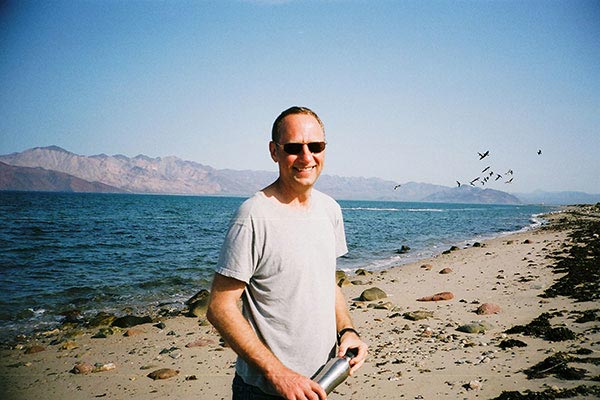 International Waters Programme in which he worked with more than three dozen transboundary
water environmental remediation projects funded by the GEF and implemented by the
UNDP. In collaboration with project managers on four continents, Ken synthesized technical
reports into a format accessible to a wider audience, including the water management
community, potential donors and the lay public. Projects ranged from improving the
state of the Benguela current off of South Africa, Namibia and Angola; to reducing
pollution and dead zones in the Danube River and Black Sea; to reducing the use of
mercury in artisanal gold mining amongst impoverished people. The common feature of
all projects, which took place in Africa, Europe, Asia, and Pacific Island States,
was bringing two or more countries together to tackle shared water environmental problems.
International Waters Programme in which he worked with more than three dozen transboundary
water environmental remediation projects funded by the GEF and implemented by the
UNDP. In collaboration with project managers on four continents, Ken synthesized technical
reports into a format accessible to a wider audience, including the water management
community, potential donors and the lay public. Projects ranged from improving the
state of the Benguela current off of South Africa, Namibia and Angola; to reducing
pollution and dead zones in the Danube River and Black Sea; to reducing the use of
mercury in artisanal gold mining amongst impoverished people. The common feature of
all projects, which took place in Africa, Europe, Asia, and Pacific Island States,
was bringing two or more countries together to tackle shared water environmental problems.
Sean Darsee (MA, 2012)
Sean developed an iPhone app to help border control and law enforcement personnel
to identify traded fins from five especially threatened shark species (scalloped hammerhead,
great hammerhead, smooth hammerhead, oceanic whitetip and porbeagle). 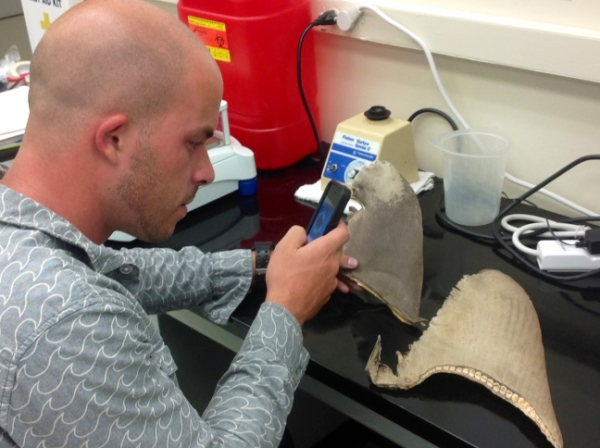 He developed the app based on a paper and web-based fin guide produced by Debra Abercrombie
and Dr. Demian Chapman (www.sharkfinid.org). Sean worked directly with the scientists
and policy experts at the Pew Charitable Trust’s Global Shark Campaign. The prototype
app was an important part of successful advocacy efforts to list these species under
the Convention on International Trade in Endangered Species (CITES) in March 2013.
It will be launched and made freely available to potential users as the new trade
restrictions on these species take force in late 2014.
He developed the app based on a paper and web-based fin guide produced by Debra Abercrombie
and Dr. Demian Chapman (www.sharkfinid.org). Sean worked directly with the scientists
and policy experts at the Pew Charitable Trust’s Global Shark Campaign. The prototype
app was an important part of successful advocacy efforts to list these species under
the Convention on International Trade in Endangered Species (CITES) in March 2013.
It will be launched and made freely available to potential users as the new trade
restrictions on these species take force in late 2014.
Other examples of organizations that our students have worked with include:
